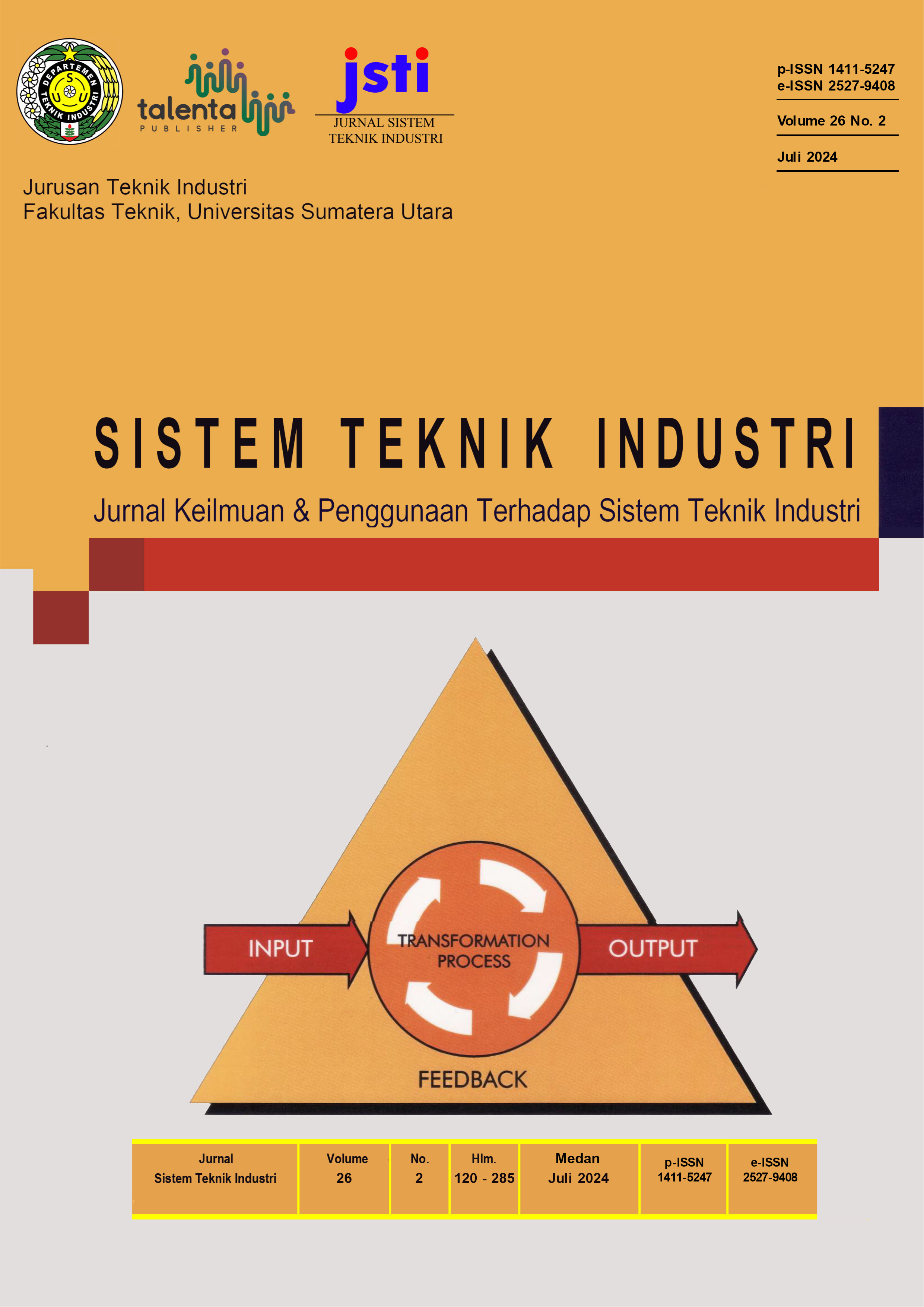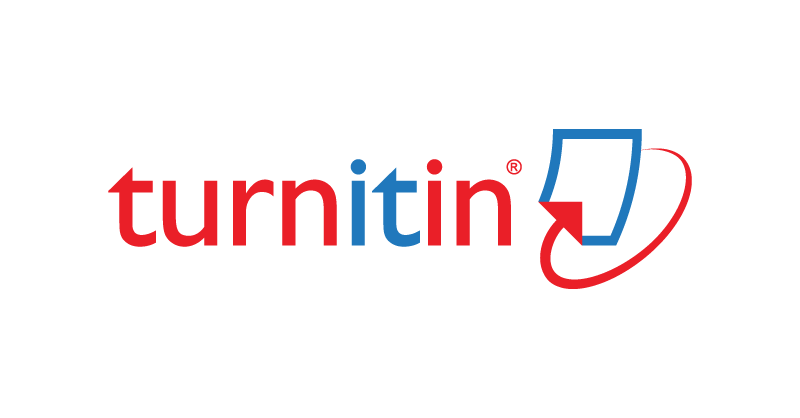Integration of Design for Manufacture and Assembly with Product Design in Product Design Improvement: A Systematic Literature Review
DOI:
https://doi.org/10.32734/jsti.v26i2.13643Keywords:
Design for Manufacture and Assembly, Design For Safety, Product DesignAbstract
This paper aims to investigate and analyze some previous literature relevant to the Design for Manufacture and Assembly and Design for Safety methods in international journals. An extensive review and analysis of the body of literature was conducted to discuss the findings in a few chosen papers pertaining to the application of both methods, using a survey based on descriptive and qualitative surveys published in international journals with publication period limitations from 2011 to 2023 published in proceedings and electronic journals in English. So far, there has never been any research or literature review that discusses the Integration of Design for Manufacture and Assembly with Design for Safety.
Downloads
References
W. Lu et al., “Design for manufacture and assembly (DfMA) in construction: The old and the new,†Architectural Engineering and Design Management, vol. 17, no. 1–2, pp. 77–91, 2021.
S. Gao, S. P. Low, and K. Nair, “Design for manufacturing and assembly (DfMA): a preliminary study of factors influencing its adoption in Singapore,†Architectural engineering and design management, vol. 14, no. 6, pp. 440–456, 2018.
Z. Bao, V. Laovisutthichai, T. Tan, Q. Wang, and W. Lu, “Design for manufacture and assembly (DfMA) enablers for offsite interior design and construction,†Building Research & Information, vol. 50, no. 3, pp. 325–338, 2022.
M. Leung, Y. Shan, I. Chan, and C. Dongyu, “Engineering, construction and architectural management article information,†Eng. Constr. Archit. Manag, vol. 18, no. 3, pp. 312–328, 2011.
G. M. Candido, P. C. Kaminski, M. A. Medeiros, and A. G. L. de Araújo, “Design for Excellence (DfX) in vehicle armoring operations: improvements and speed up a systematic literature review,†Product: Management and Development, vol. 20, no. 1, p. 0, 2022.
S. Abrishami and R. MartÃn-Durán, “BIM and DfMA: a paradigm of new opportunities,†Sustainability, vol. 13, no. 17, p. 9591, 2021.
G. Boothroyd, “Design for manufacture and assembly,†1997.
W. Lu et al., “Design for manufacture and assembly (DfMA) in construction: The old and the new,†Architectural Engineering and Design Management, vol. 17, no. 1–2, pp. 77–91, 2021.
G. Q. Huang and K. L. Mak, “Design for manufacture and assembly on the Internet,†Comput Ind, vol. 38, no. 1, pp. 17–30, 1999.
T. Tan et al., “Construction-oriented design for manufacture and assembly guidelines,†J Constr Eng Manag, vol. 146, no. 8, p. 04020085, 2020.
M. I. Abd Razak, M. A. Khoiry, W. H. Wan Badaruzzaman, and A. H. Hussain, “DfMA for a better industrialised building system,†Buildings, vol. 12, no. 6, p. 794, 2022.
P. Vaz-Serra, M. Wasim, and S. Egglestone, “Design for manufacture and assembly: A case study for a prefabricated bathroom wet wall panel,†Journal of Building Engineering, vol. 44, p. 102849, 2021.
O. Molloy, E. A. Warman, and S. Tilley, Design for Manufacturing and Assembly: Concepts, architectures and implementation. Springer Science & Business Media, 2012.
G. Boothroyd, “Design for manufacture and assembly: The Boothroyd-Dewhurst experience,†in Design for X: Concurrent engineering imperatives, Springer, 1996, pp. 19–40.
M. A. Hossain, E. L. S. Abbott, D. K. H. Chua, T. Q. Nguyen, and Y. M. Goh, “Design-for-safety knowledge library for BIM-integrated safety risk reviews,†Autom Constr, vol. 94, pp. 290–302, 2018.
E. Fadier and C. De la Garza, “Safety design: Towards a new philosophy,†Saf Sci, vol. 44, no. 1, pp. 55–73, 2006.
Y. M. Goh and S. Chua, “Knowledge, attitude and practices for design for safety: A study on civil & structural engineers,†Accid Anal Prev, vol. 93, pp. 260–266, 2016.
T.-C. Kuo, S. H. Huang, and H.-C. Zhang, “Design for manufacture and design for ‘X’: concepts, applications, and perspectives,†Comput Ind Eng, vol. 41, no. 3, pp. 241–260, 2001.
D. A. Gatenby and G. Foo, “Design for X (DFX): key to competitive, profitable products,†AT&T Technical Journal, vol. 69, no. 3, pp. 2–13, 1990.
A. I. Juniani, M. L. Singgih, and P. D. Karningsih, “Design for manufacturing, assembly, and reliability: An integrated framework for product redesign and innovation,†Designs (Basel), vol. 6, no. 5, p. 88, 2022.
T. de Meireles Carneiro, “The articulation of advanced tools for product development. The Lean Design-for-X framework supported by Fuzzy QFD,†2020.
M.-C. Chiu and G. l E. Okudan, “Evolution of design for X tools applicable to design stages: a literature review,†in International Design Engineering Technical Conferences and Computers and Information in Engineering Conference, 2010, pp. 171–182.
A. C. Benabdellah, A. Benghabrit, I. Bouhaddou, and O. Benghabrit, “Design for relevance concurrent engineering approach: integration of IATF 16949 requirements and design for X techniques,†Res Eng Des, vol. 31, pp. 323–351, 2020.
C. L. C. Roxas et al., “Design for Manufacturing and Assembly (DfMA) and Design for Deconstruction (DfD) in the Construction Industry: Challenges, Trends and Developments,†Buildings, vol. 13, no. 5, p. 1164, 2023.
C. Okoli and K. Schabram, “A guide to conducting a systematic literature review of information systems research,†2015.
H. Aveyard, “Doing a Literature Review in Health and Social Care: A Practical Guide 5e,†2023.
R. de FSM Russo and R. Camanho, “Criteria in AHP: A systematic review of literature,†Procedia Comput Sci, vol. 55, pp. 1123–1132, 2015.
E. Ferrara, P. De Meo, G. Fiumara, and R. Baumgartner, “Web data extraction, applications and techniques: A survey,†Knowl Based Syst, vol. 70, pp. 301–323, 2014.
B. Schreiweis, M. Pobiruchin, V. Strotbaum, J. Suleder, M. Wiesner, and B. Bergh, “Barriers and facilitators to the implementation of eHealth services: systematic literature analysis,†J Med Internet Res, vol. 21, no. 11, p. e14197, 2019.
O. Molloy, E. A. Warman, and S. Tilley, Design for Manufacturing and Assembly: Concepts, architectures and implementation. Springer Science & Business Media, 2012.
R. I. Williams Jr, L. A. Clark, W. R. Clark, and D. M. Raffo, “Re-examining systematic literature review in management research: Additional benefits and execution protocols,†European Management Journal, vol. 39, no. 4, pp. 521–533, 2021.
N. Williams, H. Stehling, F. Scheurer, S. Oesterle, M. Kohler, and F. Gramazio, “A case study of a collaborative digital workflow in the design and production of formwork for ‘non-standard’concrete structures,†International journal of architectural computing, vol. 9, no. 3, pp. 223–240, 2011.
J. Wang, X. Wang, W. Shou, and B. Xu, “Integrating BIM and augmented reality for interactive architectural visualisation,†Construction Innovation, vol. 14, no. 4, pp. 453–476, 2014.
T. Bock and T. Linner, Robot oriented design. Cambridge university press, 2015.
S. Yang and Y. F. Zhao, “Additive manufacturing-enabled design theory and methodology: a critical review,†The International Journal of Advanced Manufacturing Technology, vol. 80, pp. 327–342, 2015.
P. Wu, J. Wang, and X. Wang, “A critical review of the use of 3-D printing in the construction industry,†Autom Constr, vol. 68, pp. 21–31, 2016.
Y. Tang and Y. F. Zhao, “A survey of the design methods for additive manufacturing to improve functional performance,†Rapid Prototyp J, vol. 22, no. 3, pp. 569–590, 2016.
M.-K. Kim, S. McGovern, M. Belsky, C. Middleton, and I. Brilakis, “A suitability analysis of precast components for standardized bridge construction in the United Kingdom,†Procedia Eng, vol. 164, pp. 188–195, 2016.
J. W. Vincoli, Basic guide to system safety. John Wiley & Sons, 2024.
E. Öney-Yazıcı and M. F. Dulaimi, “Understanding designing for construction safety: the interaction between confidence and attitude of designers and safety culture,†Architectural Engineering and Design Management, vol. 11, no. 5, pp. 325–337, 2015.
E. Öney-Yazıcı and M. F. Dulaimi, “Understanding designing for construction safety: the interaction between confidence and attitude of designers and safety culture,†Architectural Engineering and Design Management, vol. 11, no. 5, pp. 325–337, 2015.
Y. M. Goh and S. Chua, “Knowledge, attitude and practices for design for safety: A study on civil & structural engineers,†Accid Anal Prev, vol. 93, pp. 260–266, 2016.
N. Tymvios and J. A. Gambatese, “Perceptions about design for construction worker safety: Viewpoints from contractors, designers, and university facility owners,†J Constr Eng Manag, vol. 142, no. 2, p. 04015078, 2016.
Y. Z. Toh, Y. M. Goh, and B. H. W. Guo, “Knowledge, attitude, and practice of design for safety: multiple stakeholders in the Singapore construction industry,†J Constr Eng Manag, vol. 143, no. 5, p. 04016131, 2017.
P. Manu, A. Poghosyan, G. Agyei, A.-M. Mahamadu, and K. Dziekonski, “Design for safety in construction in sub-Saharan Africa: a study of architects in Ghana,†International Journal of Construction Management, vol. 21, no. 4, pp. 382–394, 2021.
P. Manu, A. Poghosyan, I. M. Mshelia, S. T. Iwo, A.-M. Mahamadu, and K. Dziekonski, “Design for occupational safety and health of workers in construction in developing countries: a study of architects in Nigeria,†International journal of occupational safety and ergonomics, vol. 25, no. 1, pp. 99–109, 2019.
C. K. I. Che Ibrahim and S. Belayutham, “A knowledge, attitude and practices (KAP) study on prevention through design: a dynamic insight into civil and structural engineers in Malaysia,†Architectural Engineering and Design Management, vol. 16, no. 2, pp. 131–149, 2020.
Q. Abueisheh, P. Manu, A.-M. Mahamadu, and C. Cheung, “Design for safety implementation among design professionals in construction: The context of Palestine,†Saf Sci, vol. 128, p. 104742, 2020.
B. H. W. Guo et al., “A regulatory perspective on safety in design practices in New Zealand,†Saf Sci, vol. 141, p. 105352, 2021.
Downloads
Published
How to Cite
Issue
Section
License
Copyright (c) 2024 TALENTA Publisher Universitas Sumatera Utara

This work is licensed under a Creative Commons Attribution-ShareAlike 4.0 International License.
The Authors submitting a manuscript do so on the understanding that if accepted for publication, the copyright of the article shall be assigned to TALENTA Publisher Universitas Sumatera Utara as the publisher of the journal.
Copyright encompasses the rights to reproduce and deliver the article in all forms and media. The reproduction of any part of this journal, its storage in databases, and its transmission by any form or medium will be allowed.



















